- How to Propagate Monstera Guide: The Three Ways to Succeed - September 17, 2021
- Escargot Begonia: Why Is The Rex Begonia So Rare? - August 31, 2021
- Rieger Begonia: When You Can Expect The Hiemalis Begonia To Flourish - August 31, 2021
Pilea Cadierei is a tropical perennial plant that originates in Southeast Asia, particularly Vietnam. It only became popular in American homes in the 1970s but has continued to rise in popularity ever since. A consistent rise in its popularity is most likely due to the unique looks of the plant and its easygoing care requirements.
How to Identify Aluminum Plant
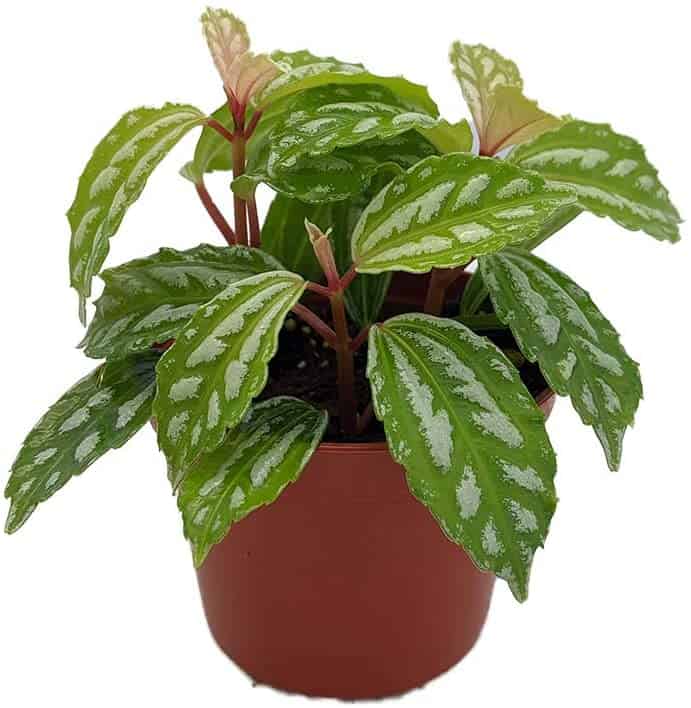
These plants are easy to identify due to their striking foliage. They feature oblong-shaped leaves that are green with splotches of raised silver, hence, the nickname ‘Aluminum Plant’.
How to Grow Aluminum Plant from Seed
This method of growing Aluminum Plants is not as common as other methods, but it can be done. Follow these steps to grow your own Aluminum Plant from the ground up.
- Purchase seeds from a reputable seller (sellers who price their seeds between $1 and $2)
- Soak the seeds in water for 24 to 48 hours
- Fill a seed starting tray or a small plant container with a seed starting soil mix
- Plant the seeds in the soil mix
- Water the soil so that it is moist but not soggy
- Place plastic wrap or the lid of the tray over the top of the container
- Set the container in a warm spot that gets plenty of bright, indirect sunlight
- Once sprouts appear above the soil level, acclimatize them to open air
- Once the plants are established, move them to a more permanent plant container
How to Propagate Aluminum Plant
An easy way to grow a new Aluminum Plant is via stem cuttings. This process should be done during spring so as to reduce the chance of shock. The steps for doing this are as follows:
- Using a sterile cutting utensil, cut off a healthy stem that includes a leaf and a node
- Set the stem in a container filled with water
- Cover the plant with plastic wrap that has a few holes in it for ventilation
- Set the container in a place that gets bright but indirect sunlight
- Once roots appear, plant the stem in a container filled with sandy potting soil
- Care for as a regular Aluminum Plant
Aluminum Plant Growing Conditions
These plants are rather easy to care for as long as they are provided with the right amount of sunlight, plenty of room for their roots to grow, and adequate warmth. While these plants originate in a humid area of the world, it is not necessary to provide them extra humidity unless it is set in an extremely dry place. Even then, it will only need a misting of water every other day to compensate for a dry environment.
How to Plant Aluminum Plant
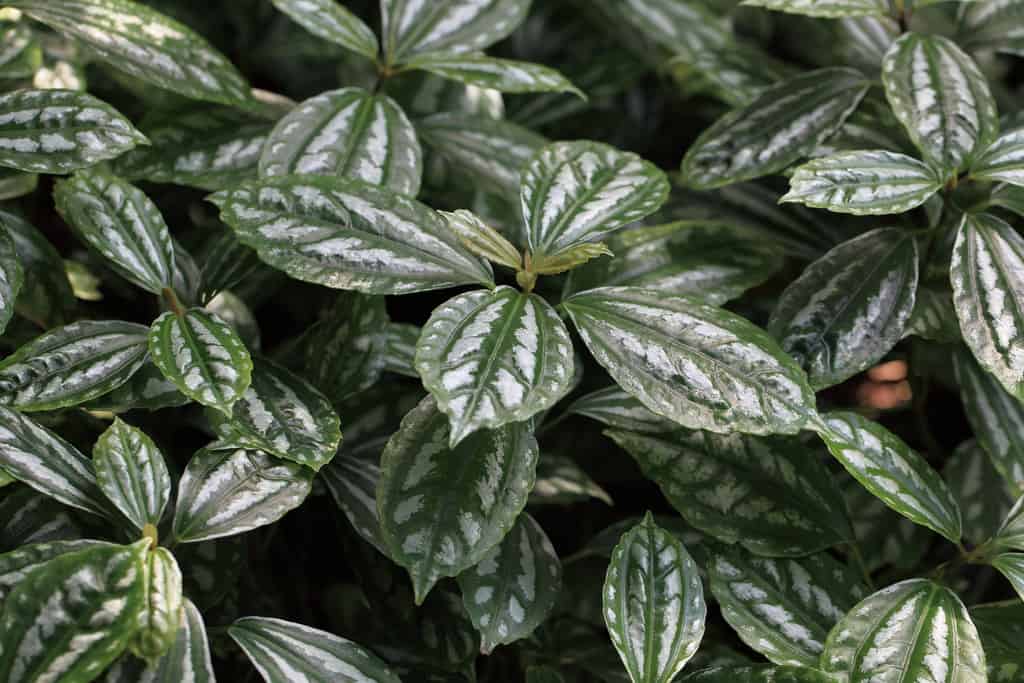
This type of plant is notorious for growing extremely large root systems that will break pots if they are not provided with adequate space. It will be necessary to check the roots of your Aluminum Plant from time to time in order to find out if they need a new pot; usually, repotting is necessary once every year. Other signs that a plant needs repotted are:
- Compacted Soil
- A plant that looks too big for its current container
The steps for repotting an Aluminum Plant are:
- Fill a new container that is two inches larger than its previous container with potting soil
- Create a hole in the soil for the plant to set inside
- Carefully remove the plant from its current container by laying the plant on its side and then pulling the pot off the root system
- Gently dust off any excess soil from its roots
- Set the plant into the hole in the new container
- Spread the soil around so that the plant is secure in its new container
- Water the plant
- Set it in a warm spot with indirect sunlight
Aluminum Plant Potting & Soil
Soil pH levels are not a big concern for Aluminum Plants. They do prefer the soil to be slightly acidic to neutral, but it is not necessary to constantly test or adjust it.
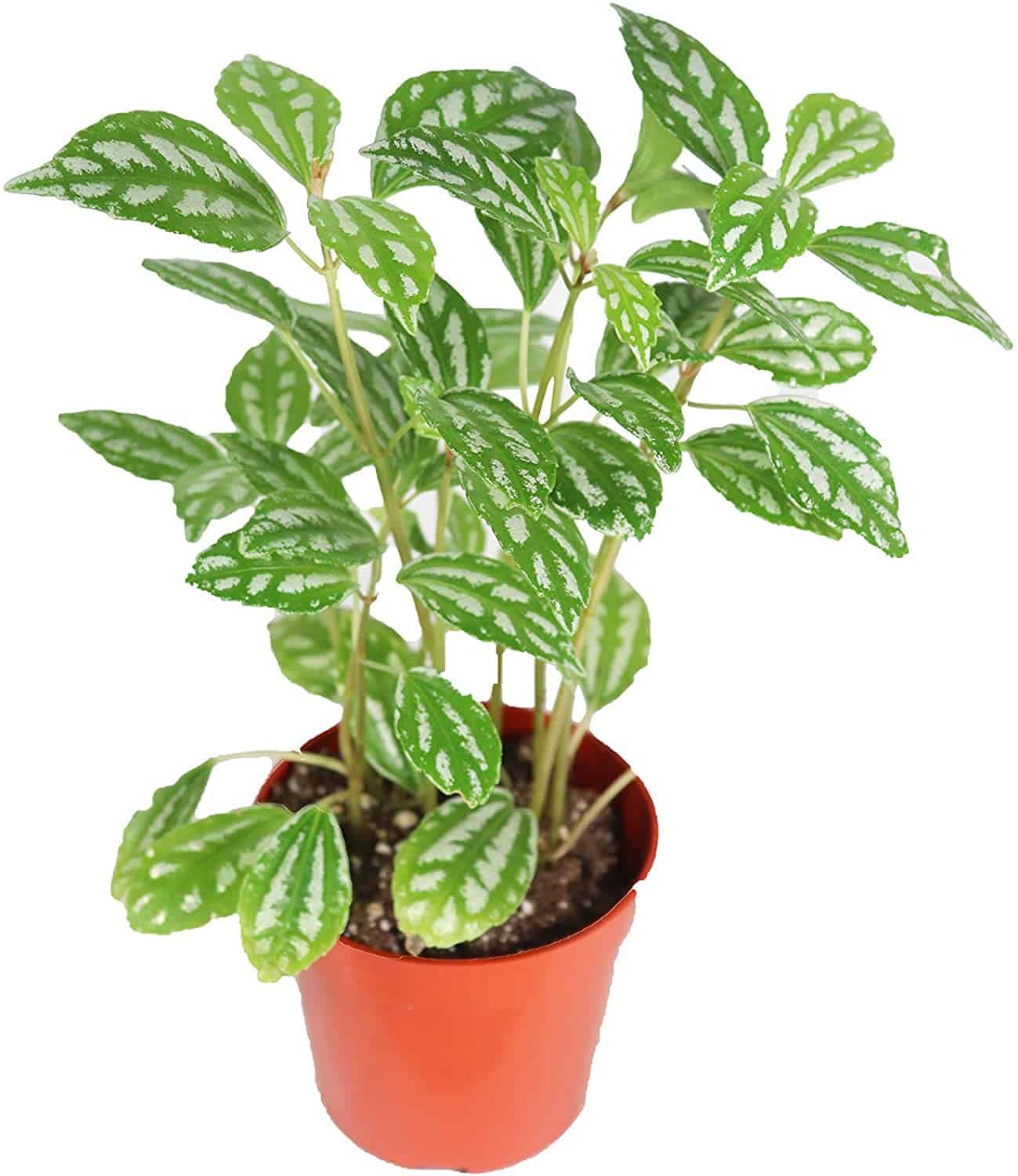
What does matter to Aluminum Plants is that the soil drains well and is full of organic matter. The soil used to pot these plants should be slightly sandy to help facilitate better drainage. Use any type of potting mix that controls moisture. One great potting mix option is Miracle-Gro Houseplant Potting Mix.
Just getting the soil right will not prevent drainage issues for your plant. Remember, to get a plant container that can also drain off excess water.
Aluminum Plant Water Requirements
Although this plant is native to humid regions of the world, it can survive without supplemental humidity as long as it is not set next to vents or drafty areas. If it does begin to look dried out, tweak its watering regimen or start misting it every other day.
To reduce the risk of root rot, always test the plant’s soil before watering it. If the top quarter-inch of the soil is dry, then the plant can use a drink; however, if the soil is still moist, the plant does not need any more water. Different seasons of the year will require different amounts of water. Winter usually requires fewer watering sessions than either spring or summer.
Take advantage of modern technology by using a plant watering app. This type of app can help track when a plant has been watered, set reminders to water it, and get answers to common plant care questions.
Aluminum Plant Light Requirements
Aluminum Plants should be set in a place that gets plenty of bright, indirect sunlight. Too much direct sunlight will dry out and burn their leaves. You can test indoor lighting with a light meter. This will ensure that your plant is receiving the amount of sunlight it needs.
Best Aluminum Plant Fertilizer
These plants definitely benefit from feedings during their growing season. They should be fed once a month between spring and autumn. It is not necessary to feed them during the winter. Choose a balanced 5-5-5 fertilizer that is water-soluble.
Best Aluminum Plant Companion Plantings
Tropical plants can benefit from being clustered with other plants since this provided them with much-needed extra humidity. There are many options to consider as a companion plant for Aluminum Plant and the following three are just a small sampling.
Pothos Varieties
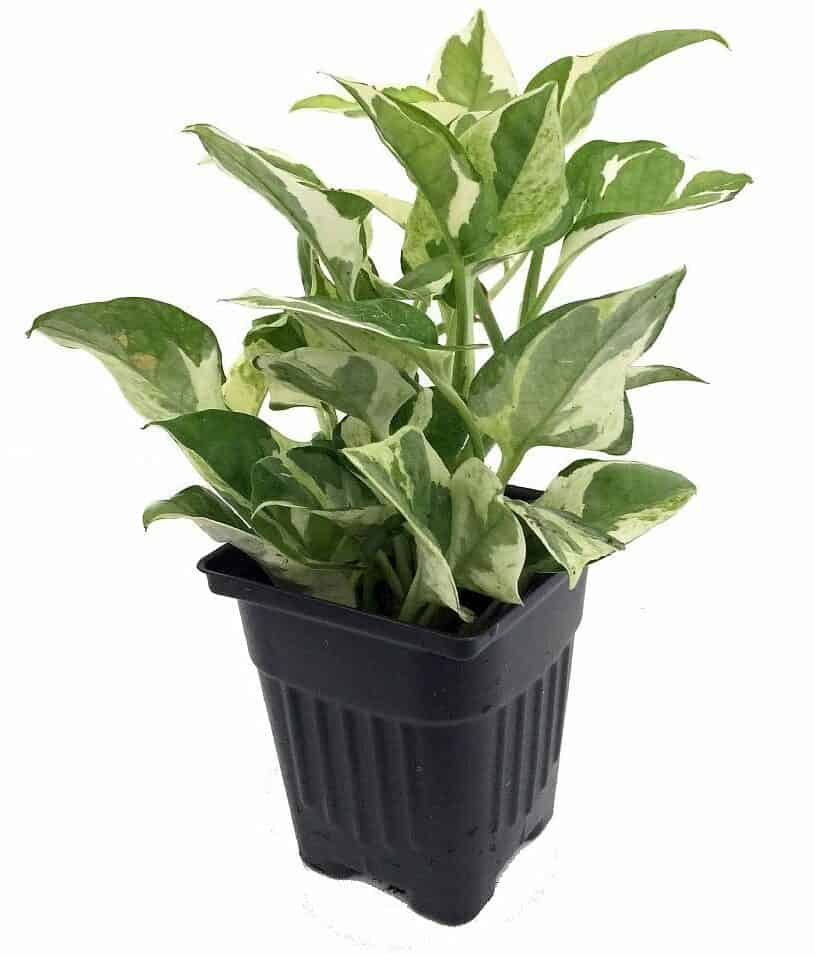
This family of plants is considered one of the easiest to care for. They are all very pretty vining plants from either Southeastern Asia or the South Pacific islands.
Pros
- Pothos plants are very unfussy plants
- Pothos plants will provide each other with extra humidity
- Pothos plants are known for their ability to clean indoor air
Cons
- Most Pothos varieties are toxic
Philodendron Varieties
This family of plants offers a wide variety of colors, leaf shape, size, and care requirements. Most varieties are very easygoing and do not require much tedious care; others can be quite difficult to keep healthy and happy. Look for a variety that best suits your skills and your needs.
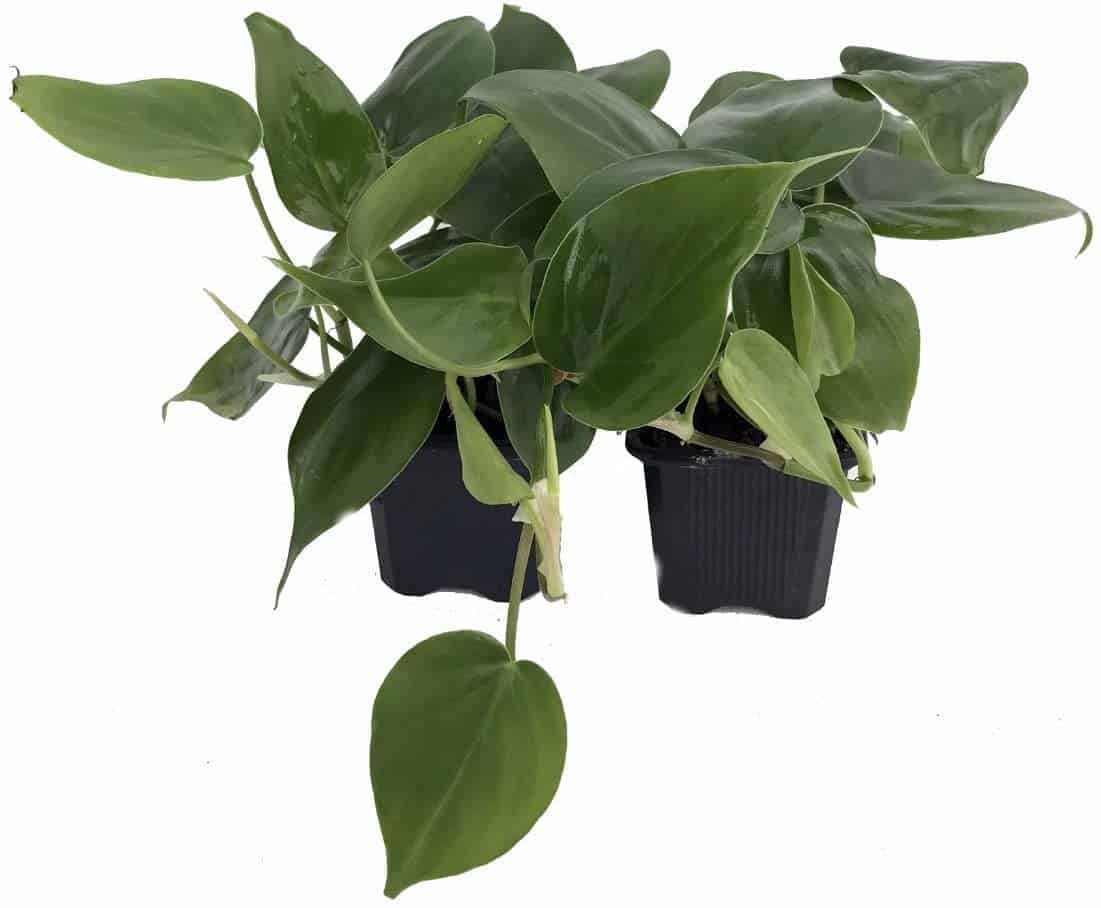
Pros
- Philodendron plants can come in many different colors or variegations
- Philodendron plants offer varieties that are easy to care for
- Philodendron plants can purify the air from formaldehyde and other air pollutants
- Philodendron Plants will provide each other with extra humidity
Cons
- Philodendron plants offer varieties that are difficult to care for
- Philodendron plants offer varieties that are difficult to find and are expensive
- Most Philodendron varieties are toxic
Monstera Varieties
These tropical plants will provide your Aluminum Plant with extra humidity without any hassle. These strikingly beautiful and easygoing plants are a gardener’s dream.
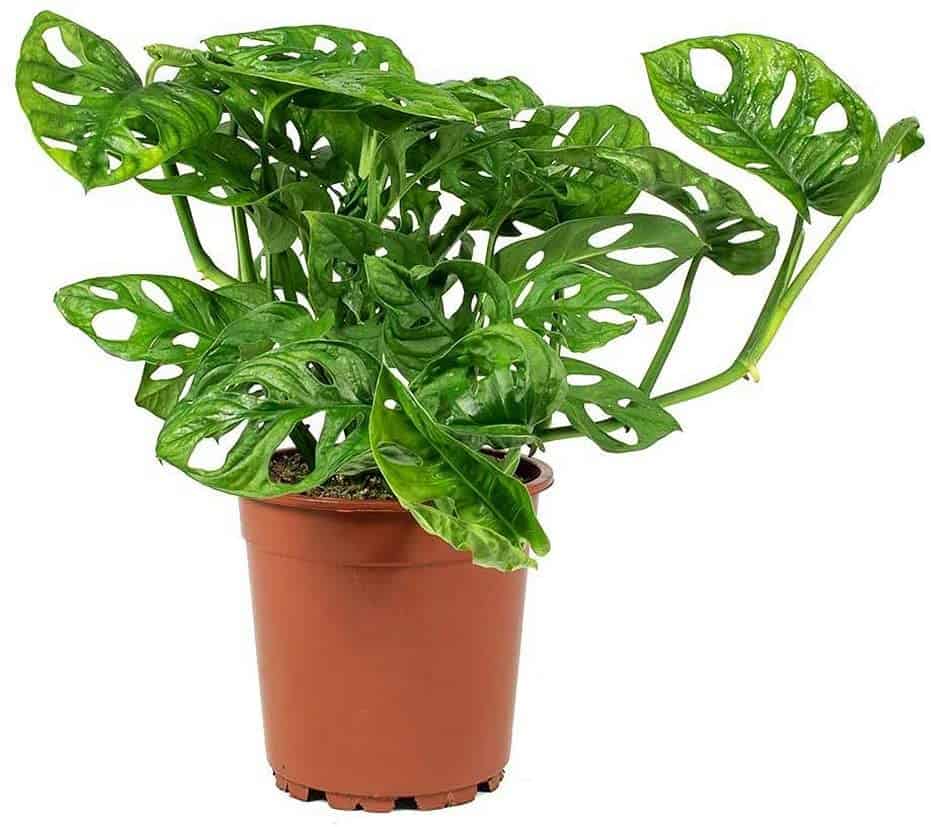
Pros
- Monstera plants are highly decorative houseplants
- Monstera plants can come in many different colors or variegations
- Monstera plants are easy to care for
- Certain Monstera varieties produce edible fruits
- Monstera plants will provide each other with extra humidity
Cons
- Monstera plants are slightly toxic
Aluminum Plant Diseases and Common Problems
Most plants are susceptible to a few pests and diseases and Aluminum Plant is no exception. However, if you learn how to properly care for your plant, these pests and diseases should not be a huge problem. Here are the most common issues faced by Aluminum Plant:
Browned or Browning Leaves
This is often a sign that the plant is not receiving adequate amounts of moisture. Tweak its water regimen and provide it with more humidity and the plant should recover.
Other problems that show up as browning on leaves are too much fertilizer or too much direct sunlight. If you suspect either of these may have caused your plant’s leaves to turn brown, try moving it to a shadier area to avoid direct sunlight or saturate the soil of the plant to remove excess fertilizer.
Burnt Edges on Leaves
This is a sign that the plant is either under-watered, over-exposed to sunlight, over-fertilized, or possibly all three. The plant can recover if you tweak its water regimen, move it to a shadier spot, and remove the excess fertilizer from its soil. If you are unsure which problem is causing the burnt edges on your plant’s leaves, try one treatment for a few weeks before switching to another.
Mealybugs
Evidence of an infestation of mealybugs is small white spots that look like cotton on leaves and stems. To deal with an infestation of mealybugs, follow these steps:
- Spray a solution of alcohol and water on the leaves
- Rub the leaves with a cotton ball
- Coat the leaves in neem oil or insecticidal soap every few days
Root Rot
Evidence of this problem is leaves that have turned brown or black. To treat this problem, let the soil dry out completely and set the plant in a place where it will get plenty of airflow. If it is still struggling with too much water in its container, follow these steps:
- Remove the plant from its container
- Wash off all the dirt from its roots
- Cut off any roots that are rotten
- Replant the plant in a clean container with fresh soil
- Wait to water it for a few days
Spider Mites
This type of infestation looks like webbing spread over the plant’s leaves and stems. To deal with this type of infestation, follow these steps:
- Spray the plant with a mixture of 1 quart of warm water, 1 tsp. of dish soap, and 2 tsp. Of neem oil
- Wipe off the leaves and stems
- Repeat as necessary
Yellowed or Yellowing Leaves
This is a sign that the plant has been overwatered. If its water regimen is adjusted it should recover.
Aluminum Plant Treatments and Maintenance
The best way to prevent harmful diseases and pest infestations is to provide the plant with regular care and cleaning. Here are a few tips to help keep your plant as healthy as it can be.
- Check it for signs of disease and infestations regularly, and treat them quickly.
- Clean the plant’s leaves regularly with neem oil.
- Learn how to properly water and feed your plant.
- Make sure your plant is set in an area with adequate amounts of sunlight, heat, and humidity.
- Mix diatomaceous earth into the soil of potted plants.

Where to Buy Aluminum Plant Seeds Online
Seeds for this plant are difficult to find. When you search for seed sellers, look for those who have good ratings and price their seeds between $1 and $2 per seed. A few online shops that are a good place to begin your search are:
Where to Buy Mature Aluminum Plant Online
Even though the seeds for this plant are difficult to locate, mature plants are easy to find in many online shops. Here is a selection of several online shops that sell these plants:
- Calloway’s Nursery
- Etsy
- Petitti Garden Centers
FAQs
Question: Is Aluminum Plant Toxic?
Answer: Yes, this plant is toxic to pets. If a pet has consumed one of these plants, call a medical professional or poison control immediately.
Animal Poison Control
Ask a Poison Control Vet
Question: Which USDA Hardiness Zone Can Aluminum Plant be Planted In?
Answer: These are not cold-hardy plants, so it is important to know which hardiness zone you live in so you can determine how to plant them. Aluminum Plant should only be planted in the ground if you live in zones 9b to 11. If you live in zones lower than these, they should be planted in a container that can be transferred indoors during winter.
Question: Should Aluminum Plant be Pruned?
Answer: Yes, pruning will actually help the plant to grow healthier and it is an opportunity to streamline propagation via stem cutting.
Question: Does Aluminum Plant Produce Blossoms?
Yes, but this is rare. Also, they should be removed as soon as they appear. Because this will help to conserve energy and resources for growing more foliage.
In Conclusion
Aluminum Plant is another lovely tropical plant that is very pretty and very easy to care for. Consider growing one in your home or garden today.

